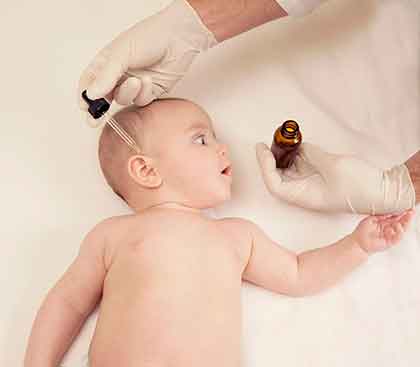Your Baby’s Genetic Makeup

Knowing your child’s vulnerabilities early on can aid treatment.
Do you want to get the most complete data possible on your infant’s genetic makeup — a sequence of the whole genome?
Someday genome sequences may be routine or state-mandated for infants, like the current heel-prick test, which provides a blood sample examined for about thirty conditions. Down the road, data on your baby’s genome could point doctors to the best allergy medication or help prevent allergies altogether. “We are entering an era where all of medicine is genomic medicine,’’ says Robert C. Green, MD, MPH, a geneticist at Brigham and Women’s Hospital in Boston participating in a government research program that will sequence the genomes in newborns. “In the next five to 10 years, as costs come down and interpretation is more established, it will increasingly be to everyone’s advantage to have sequencing information integrated into their care.”
YOU MIGHT ALSO LIKE: What Is Genomics?
Many parents are pleased: About 76 percent of new parents expressed interest in seeing a genome sequence, in one study. Those who don’t may not trust the test; they may be concerned about privacy, or they might prefer not to hear about the risks of illnesses that may never occur, or if no preventive strategy is available.
If doctors screen for a gene variant linked to childhood-onset colon cancer, careful follow-up could lead to earlier detection and treatment. A gene variant associated with Rett syndrome halts a child’s development at six to 18 months and has no cure — but you might want to know, anyway.
For sick newborns, the case is much clearer. Some 14 percent of the four million babies born in the United States each year enter the neonatal intensive care unit, with sometimes unexplained problems. Hospitals are already sequencing their genomes — sometimes focusing on the exome, the area most likely to reveal genetic problems. The test costs about $1,000. Early research shows that it can lead to diagnosis in tough cases. When critically ill newborns at one hospital received genomic tests, doctors landed on a diagnosis for 57 percent.
Among older children with neurological or developmental problems, some of whom had been looking for a diagnosis for years, another study reported that the tests led to diagnosis in 40 percent of the families.
As genomic sequencing enters the baby wards, geneticists are hard at work researching how to make it more useful. Scientists associated with Inova Fairfax, a large medical center serving the Washington, D.C. metro area, have recruited 1,028 families to study the role of genes in premature births. They took samples of cheek cells, saliva, and blood from both parents and the baby, and are now analyzing the data.
In another Inova study, scientists are analyzing the gut bacteria of premature babies, which can interact with genes in ways that cause diseases like obesity and allergies.
In 2012, an Inova team launched the “Longitudinal Childhood Genome Study” to see the contribution of various risks — including genetic risks — to common childhood illnesses. Its goal: to generate more than 20,000 whole genomes. The first sample collection, from children and family members, came early in pregnancy; subsequent samples will occur until the children turn 18. Families are asked to answer surveys every six months. The data may ultimately help doctors learn how to screen babies for asthma, autism, diabetes, and obesity and better tailor prescriptions.
But lots of public health questions remain. Will genome sequencing just make doctors order more tests and interventions — and will any of it lead to better health?
Updated:
March 31, 2020
Reviewed By:
Janet O’Dell, RN